News/Views
Fujifilm Explains (or Doesn't) Film Simulations
Fujifilm has a new marketing page about the various film simulations in their camera. When a company goes to the trouble of trying to explain how something unique to their product works, one holds out hope that it reveals something useful to your photography.
Unfortunately, that's not the case here. The page seems to be marketing blather with lots of self back-patting. Read the actual words and nothing is revealed. For instance, "a wide variety of looks, while maintaining an overall consistency." What does that mean? Those are two discordant notions—wide variety and overall consistency—so if you're going to bring them up together you need to describe how that works.
Another phrase that is all trumped up marketing: "film simulations inherit the vision of the future we strived for in the analog era." Wow, I had a hard time putting myself into the same time frame as whoever wrote that time traveling jargon. If I parse it as written it says "in the past we had a vision we did not fulfill, but now we have the same vision [inherited]." Was this vision ever fulfilled? ;~)
Then there's this: "two types of film simulation" and "each film simulation is designed using PROVIA as a base standard." Which is it? One type or two two? Apparently the AI Fujifilm used in creating this page doesn't know. What Fujifilm appears to be saying is that they provide two sets of simulations, one that can be used for most subjects and is more natural in rendering, the other which uses exaggeration or a specific individual deviant trait for a more creative rendering. "Neither type claims to be the right answer." Oh, you mean that we might need further types, Fujifilm? Stop me before the AI garbage speak chokes me completely.
Or maybe this: "Color Chrome Effect...[maintains] vibrancy by...controlling the brightness." If we go back to basic color theory, we know that color comprises of hue, saturation, and lightness. What they actually seem to do is put more contrast into some hues. That doesn't "maintain vibrancy," it tends to visually increase saturation. And why is this "Chrome"?
And don't get me started on their example for Color Chrome FX Blue—why is this "Chrome" named differently than the previous one, by the way?—as their example takes the usual Fujifilm cyanish sky and makes it old Fujifilm slide film magenta. Neither are "natural to the naked eye." Moreover, the copy editor managed to miss this one: "a photo taken outdoors on a sunny day should look blue." Really?
This new article joins other Fujifilm articles that make claims that aren't exactly correct (e.g. "X-Trans controls moire..." or "replicates a highly random arrangement of silver particles" [X-Trans is not random]).
Bottom line: Fujifilm's marketing team once again gets an A for effort but an F for information and accuracy.
"Compact" Gets a New Contender
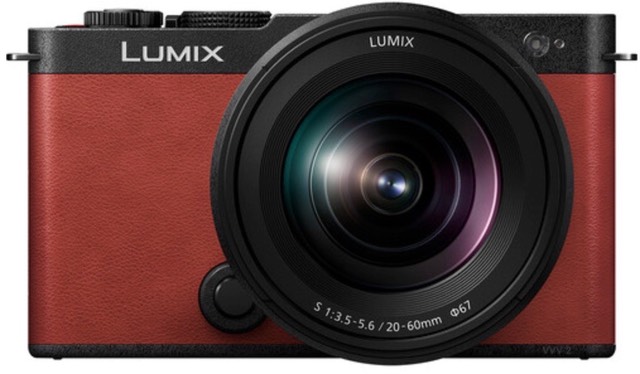
Panasonic today announced the S9 camera, a 24mp full frame body with a bit of a difference: it's physically similar in size to the APS-C sensor Fujifilm X100VI, but with an L-mount out front. While Panasonic has made some claims about smallest full frame body, I think the Sigma FP comes in with slightly smaller volume. Still, the S9 is small. The price? US$1499 without lens (more on that in a bit).
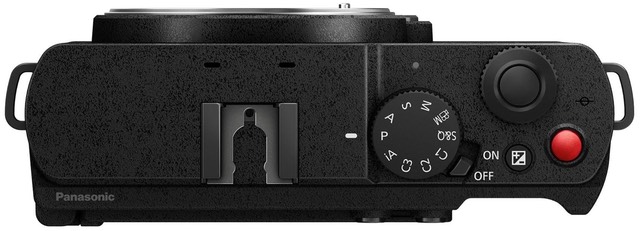
In essence, the S9 is a restructuring of the 24mp S5 II: far smaller gripless body (the L-mount barely fits on the front), no built-in EVF, no mechanical shutter, plus more features targeted a "creators" including different body colors (red, blue, green, orange, panda, as well as black; not every color is available in every market) and a LUT button. Surprisingly, the S9 has a large subset of the S5 II feature set, including things like sensor-based stabilization and open gate 6K recording, though the menus have been simplified. The drawback is that, given the small body size, video recording length will be limited to 10 minutes at 6K and 15 minutes at 4K (to keep from overheating).
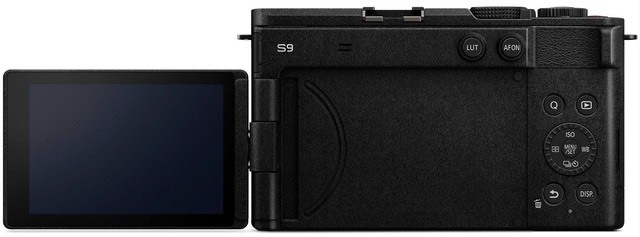
One new feature is the so-called LUT button. Panasonic is now allowing users to bring up pre-defined looks—up to 39 can be stored in the camera—quickly using a dedicated button on the back of the camera. Along with that function, Panasonic also released a new Lumix Lap application that helps you select, customize, and manage your LUT collection as well as provide direct downloading from the camera.
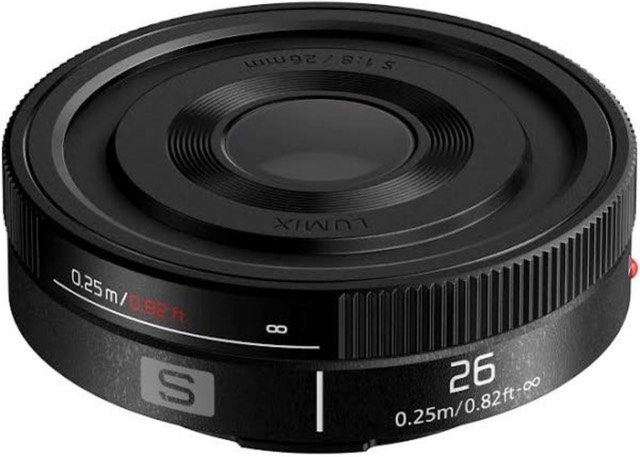
Along with the S9, Panasonic introduced a 26mm f/8 manual focus pancake lens for the L-mount, which makes for a nearly pocketable combination and a lot of folk saying "f/8 and be there" again. This lens has a nominal MSRP of US$199. Panasonic also introduced a new 18-40mm f/4.5-6.3 lens, but with no specs or pricing yet. Both these lenses won't be available until late September at the earliest, apparently. If you want an S9 today with a reasonable lens, the current kit will be with the Panasonic 20-60mm f/3.5-5.6 L-mount lens. At 3.4" (87.2mm) long and 12.4 ounces (350g), that lens is probably at the "big" end of what most would want to put out front of the S9.
Commentary: the S9 is just the first competitor attempt to take the wind out of Fujifilm's X100VI sail. More are coming. The question is whether or not any have a real ability to cut into Fujifilm's market share.
The S9 has a chance. With its fully adjustable touch LCD, small size, full frame sensor, and deep feature set, it may attract plenty of attention. Panasonic's really counting on a combination of things to get creators' attention, though: (1) near X100VI size but a full frame sensor; (2) a simple but customizable style (colors); and (3) the new LUT capability, where pre-defined looks can be created and pulled up with a button. Is that enough?
Unfortunately, the Panasonic S9 is currently lens starved. The Sigma L-mount Contemporary primes, such as the 17mm f/4, 20mm f/2, 35mm f/2, 50mm f/2, or 65mm f/2 seem to make sense on the new camera, not only size-wise, but also price-wise, as well. But Panasonic doesn't have a great variety of lenses that keep the compact notion compact. Perhaps the 14-28mm f/4-5.6 macro and 85mm f/1.8.
Once you're beyond 3" long and a pound in weight, I think you're stretching with the S9, I'd just get the S5 II. Panasonic really needs a line of pancakes for the S9 if it really wants to succeed in the "compact" arena. The lightest, smallest gimbals, which I'd want to pair this combo with if I were truly a "creator" only take about a four pound payload and are two pounds themselves. That's just do-able with the S9 and the right lens.
Long term, the right lenses are needed to make the S9 a real success. The Fujifilm X100VI's claim to fame is that it's a (nearly) pocketable option that you just whip out and start both making stylish stills and videos while looking (retro) stylish in doing so. The LUT ability of the S9 takes on Fujifilm's film simulations for the stylish stills bit, and the colors and simple body style take on the X100VI retro style. But for the "whip it out" thing to work requires the right lenses, which really don't exist yet.
One thing that's curious and which few are talking about is why Panasonic hasn't made such a camera in the m4/3 mount. Given that the G9 II is also basically the S5 II body, Panasonic could have made a 25mp G9mini following the same basic size/features simplification, but would have had a source for "small" lenses from day one.
Panasonic's aggressive pricing, as well as launch timing, work to their advantage. At least for the moment, while everyone in the press is still oohing and aahing over the S9. The question is whether things still work once all the announcement hyperbole has worn off and people actually start using the product with whatever lenses are currently available.
Here in the US there's another problem: marketing and sales. Good luck finding the Lumix Web page without help. The full list of authorized Panasonic dealers is now down to 60, and that's including BestBuy, Buydig, Sky Mall, and a number of other not exactly camera stores. Indeed, one of the authorized dealers, Nebraska Furniture Mart, does not report any Lumix cameras for sale via their Web site. Fujifilm has a wider and more visible dealer set, so it's more likely you can stop by somewhere close and check out the X100VI in person than you can the S9.
Fujifilm X Summit Announcements
Fujifilm's camera strategy still seems somewhat suspect to me. They appear to undercut themselves for no clear reason. Today's new cameras introduced at the Fujifilm X Summit in Sydney, Australia are excellent examples of that.
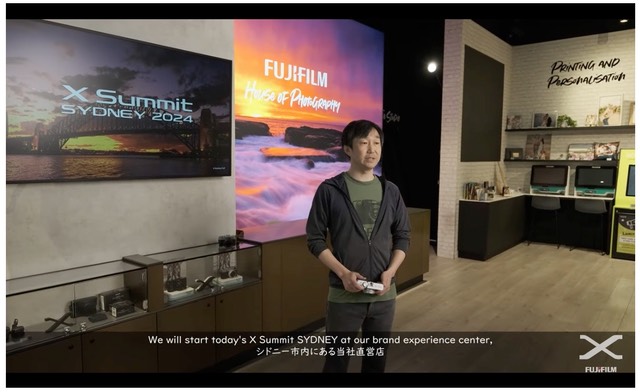
The new X-T50 replaces the X-T30, and basically is an all-new body with much of the X-T5's specs, including the 40mp sensor. The primary difference in the higher model lies in the Rear LCD adjustability, the higher resolution EVF, the larger battery, ability to use battery grips and fan accessories, and the inclusion of second card slot. Given the US$300 price differential, the changes in the X-T5 might not seem worth the money the some. In essence, the X-T50 undercuts the X-T5.
Meanwhile, the new GFX100S II becomes the lowest priced 100mp medium format camera at US$5000. With a US$1000 lower price the new version manages to get a few clear advantages over its predecessor: 8 stops IBIS, X-Processor 5 and all the abilities that come with that (including subject detection focus), a bigger EVF (5.76m dots), more images per charge, and a slight reduction in weight. Compared to the more expensive GFX100 II, what you really give up is a few Fn buttons, a CFe slot, and a few megapixels in the EVF (still upgraded from the previous model, though). Frame rate and buffer size is lower, and the video specs are also more modest. Again, an undercut.
I suppose this is "build market share" strategy, but it has to come at a cost to gross profit margin, and I'm not sure that Fujifilm isn't hurting themselves. For example, we now have a number of cameras using the 40mp sensor, but one of those (X100VI) is in extremely short supply compared to demand. Unless Fujifilm has turned on the spigot for 40mp sensors, they run the risk of not being able to take advantage of the popularity of the cameras they've already introduced. Indeed, my guess is that X100VI demand is already dropping, even before Fujifilm has managed to meet backorders.
Fujifilm also announced two new lenses at the summit: the 16-50mm f/2.8-4.8 R LM WR for the XF mount, and the 500mm f/5.6 R LM OIS WR for the GFX mount. The former becomes the new "standard" zoom lens for the APS-C bodies (X-S20, X-T50, X-T5), while the latter is a near 400mm equivalent telephoto for the large medium format sensor bodies.
Canon R1 Gets a Development Announcement
The roles have reversed.
Back at the Tokyo Olympics (2021 due to COVID delays), Canon had a pro camera ready (R3) and Nikon had a prototype (Z9). For the Paris Olympics (2024, begins end of July), Nikon now has a top pro camera that's been reiterated five times (Z9), and Canon will now have a prototype (R1).
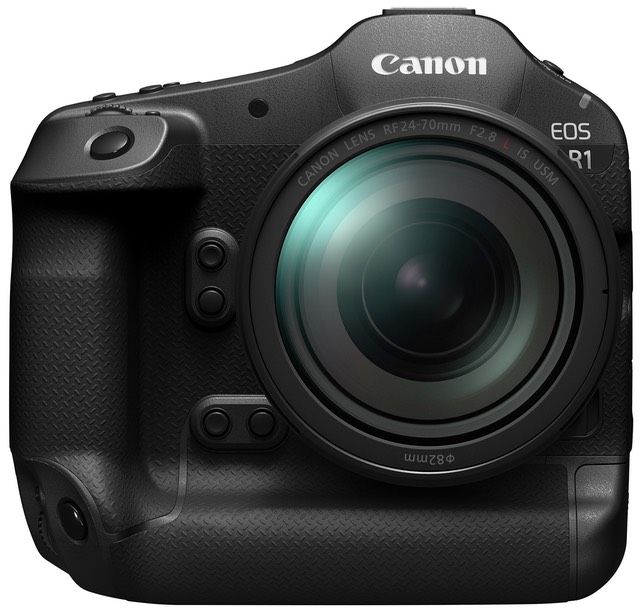
Today Canon posted a Development Announcement for the R1, with the only substantive information being that there is a newly developed adjunct image processor (Digic Accelerator) and new CMOS sensor. Strong hints at changes to the focus system and what it can recognize were also given.
A photo of the front of the new R1 allows comparison with the R3: the R1 is a little bigger and continues Canon's swoopy design ethos.
Update: some retailers around the world briefly posted, then withdrew, some additional information:
- 30mp stacked image sensor
- Fast readout speed allows 1/1250s flash sync
- Frame rates from 40 fps (low compression raw) to 60 fps (higher compression raw), with a maximum of 240 fps (probably JPEG)
- Increased dynamic range over R3
It's unclear if this information is accurate, however it was interesting that multiple stores seemed to have posted additional information and then withdrew it.
